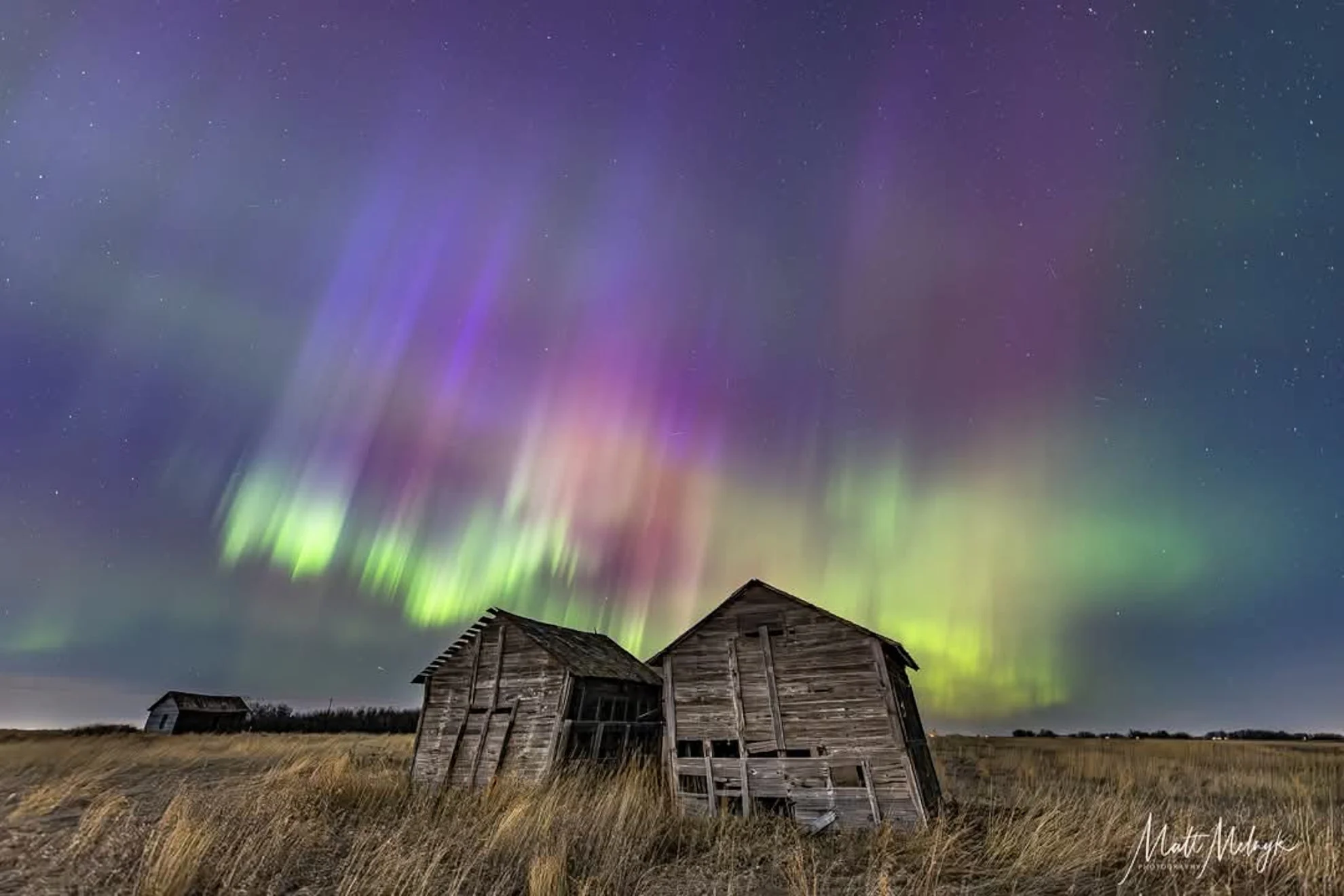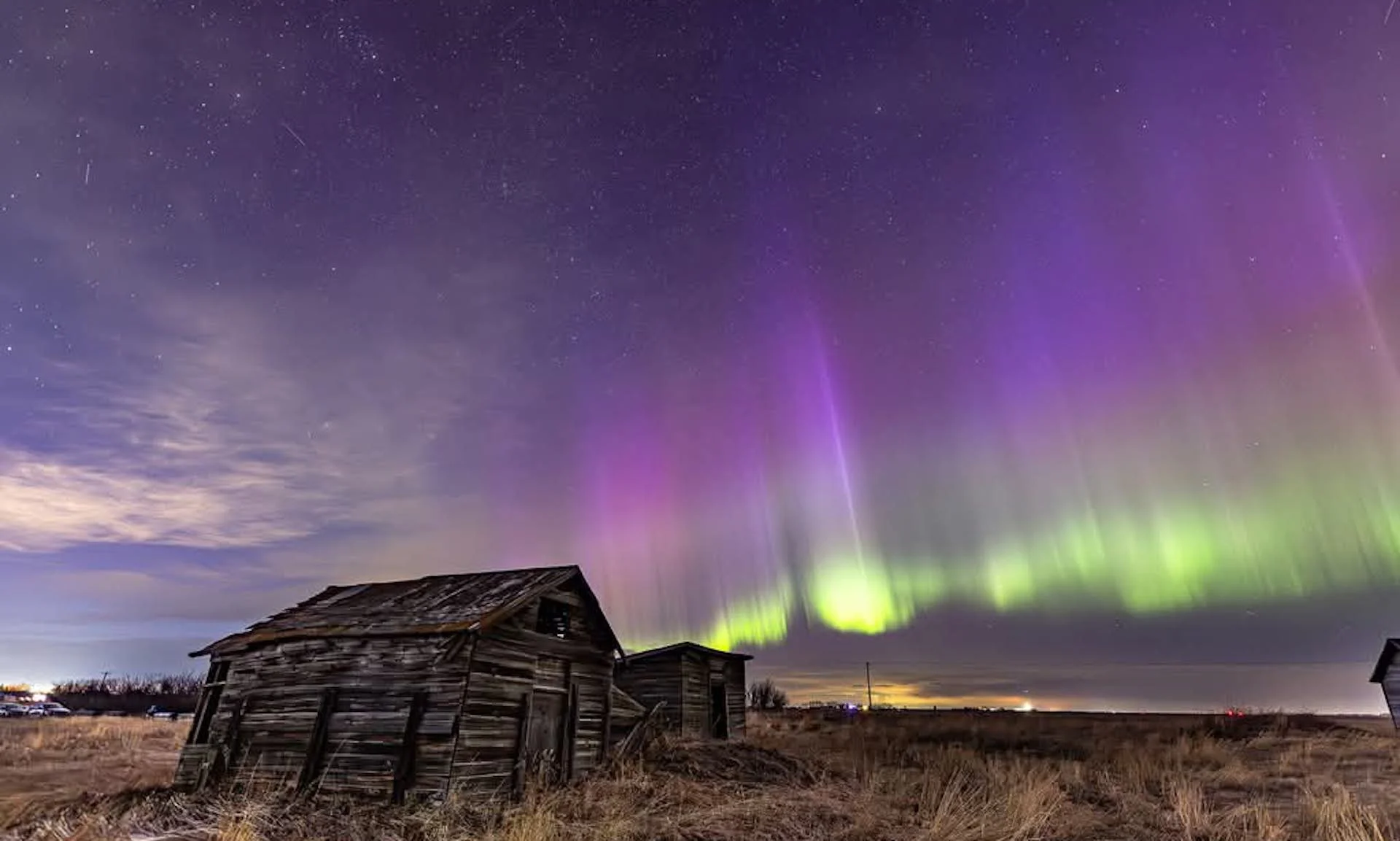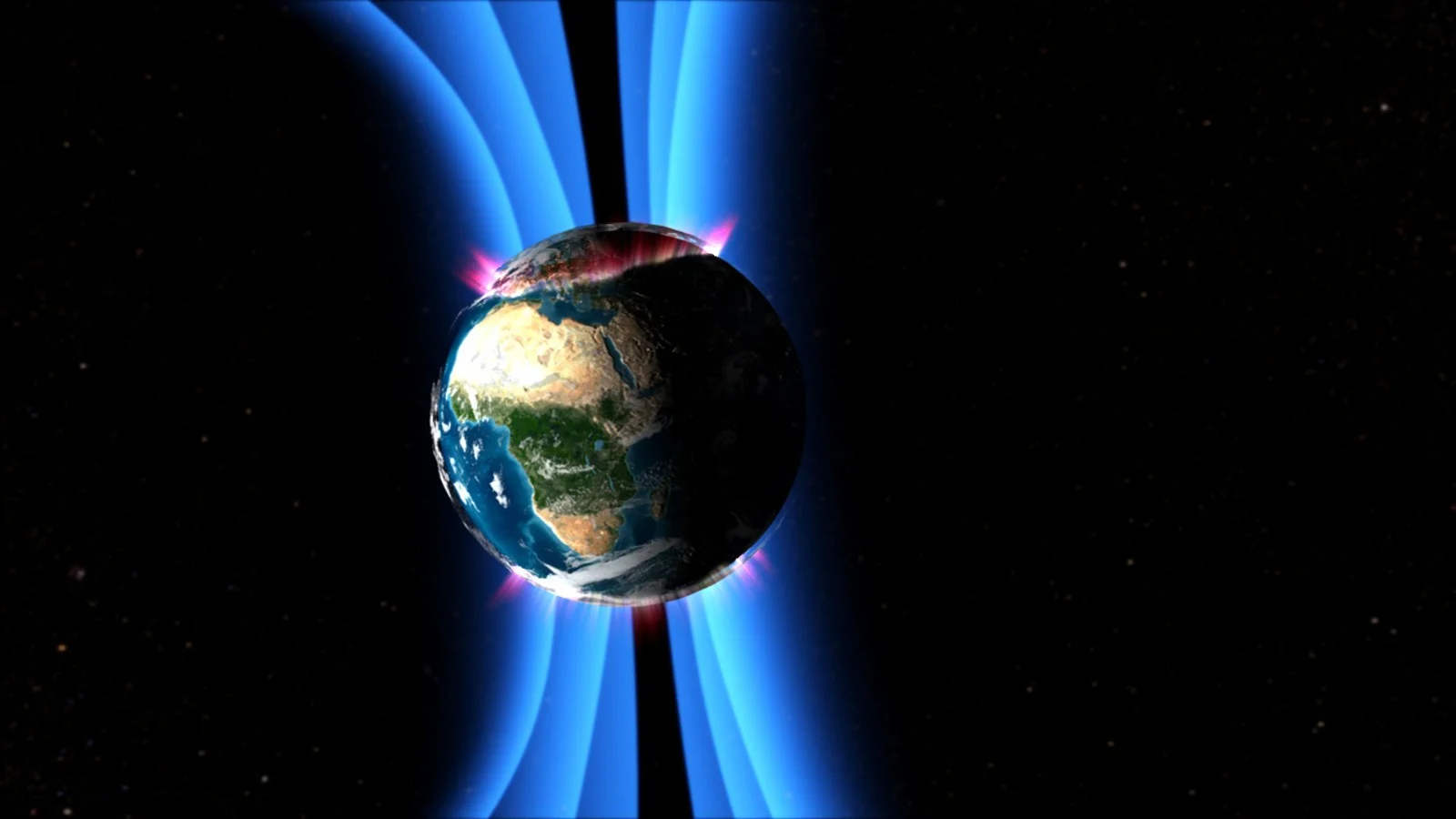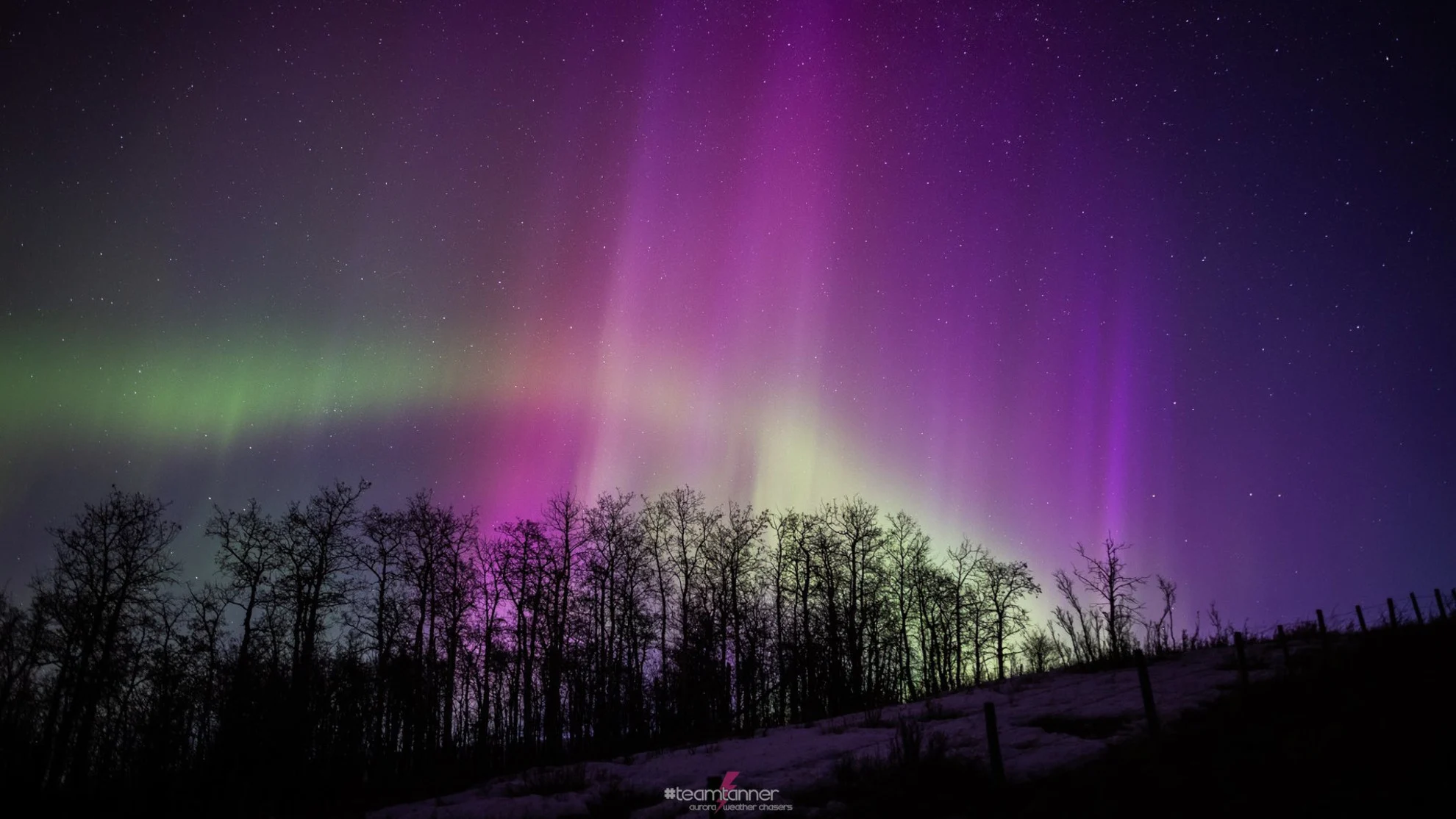
Aurora 'bonus rounds' possible for parts of Canada tonight
Spring 'equinox cracks' are helping the auroras put on spectacular displays right now.
If you have clear skies in your forecast over the next couple of nights, especially for those across the Prairie provinces, look up for a chance to spot the Aurora Borealis shining in the sky.
The Northern Lights put on a surprisingly good show over parts of Canada Friday night, which continued through Saturday night and Sunday morning.

This display of the Northern Lights was captured north of Calgary, AB, on March 21, 2025. (Matt Melnyk/X, used with permission)
Now, the forecast from NOAA's Space Weather Prediction Center includes the possibility of more auroras for Monday night and Tuesday night, as Earth encounters a blustery (high energy/high speed) stream of the solar wind.
Conditions may reach G1 (minor) geomagnetic storm levels on Monday, and could get up to G2 (moderate) levels Tuesday night.
The Canadian Space Weather Forecast Centre is also expecting unsettled conditions across the same region, with the potential for some some stormy intervals (equivalent to a G1 or G2 geomagnetic storm).
READ MORE: Geomagnetic storms - When should we look up and when should we worry?
The best places to see the auroras, especially on Tuesday night, will be across central regions of the country — Labrador, northern Quebec and Ontario, and across the central and northern Prairies.

This experimental tool from NOAA predicts the extent of aurora displays for tonight (March 24) and tomorrow night (March 25), based on the predicted geomagnetic storm levels. (NOAA SWPC)
Although the auroras seen over the weekend were due to the effects of a weak solar storm (aka coronal mass ejection) sweeping past Earth, the impacts of that storm may have been enhanced by a phenomena known as 'equinox cracks'.
Equinox Cracks?
The Sun and Earth are each surrounded by their own magnetic field. The Sun's magnetic field not only creates a safe 'bubble' around our solar system, but it also contributes to solar activity, such as solar flares and coronal mass ejections.
The Earth's magnetic field reacts to these solar storms, and to the flow of the solar wind, which results in coloured displays across our sky known as the Aurora Borealis, or the Northern Lights. Similar displays are seen around the south pole, known as the Aurora Australis or the Southern Lights.

Auroras appear around the north and south poles of Earth as Earth's geomagnetic field traps particles from the solar wind and funnels them down into the atmosphere. (NASA)
READ MORE: Why are the Northern Lights so supercharged lately and how long will this last?
Due to Earth's tilt, our planet's magnetic field is nearly always out of alignment with the Sun's magnetic field. So, even under the absolute ideal conditions for a solar storm or the solar wind to result in auroras, that misalignment effectively reduces the overall intensity of any aurora display that does appear.
However, around the equinoxes, the magnetic fields of the Sun and Earth line up better than they do during the rest of the year.

The orientation of Earth's magnetic field at northern summer solstice (left), equinox (centre), and northern winter solstice (right). The Sun is located far off the left side of the field of view, and its magnetic field is oriented most in alignment with the centre panel. (NASA/Scott Sutherland)
This alignment causes the two magnetic fields to form strong connections with each other, which opens up 'cracks' in Earth's magnetic field. These cracks then allow more particles from the solar wind or from solar storms to stream down through that protective barrier and into upper atmosphere.
As a result of all this, auroras that occur around the spring and fall equinoxes can be some of the brightest and most colourful of the entire year!

This colourful aurora display was captured by Tree and Dar Tanner from central Alberta, on March 23, 2023. (TeamTanner)
Written with files from The Weather Network
Thumbnail image courtesy Matt Melnyk, who captured the aurora borealis north of Calgary, AB, over the weekend, and posted his images to X. (Picture used with permission)
